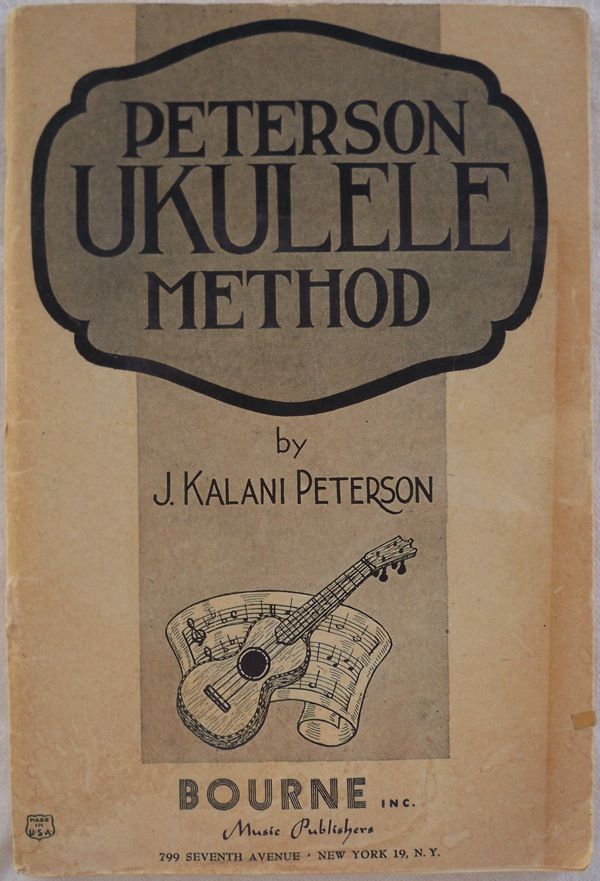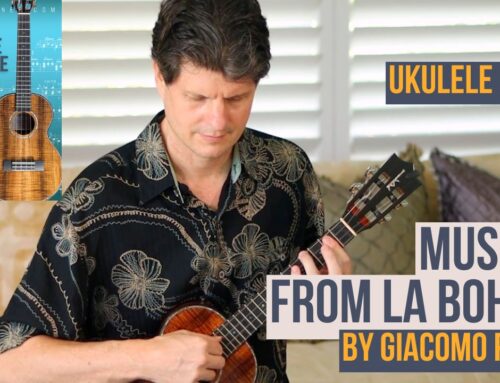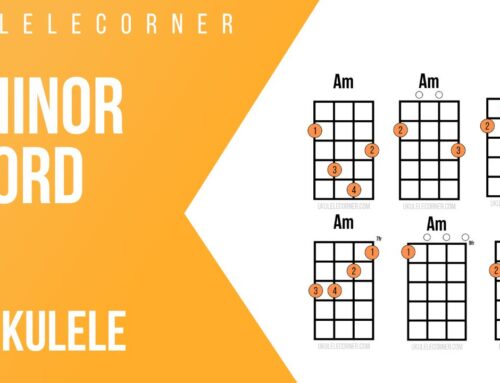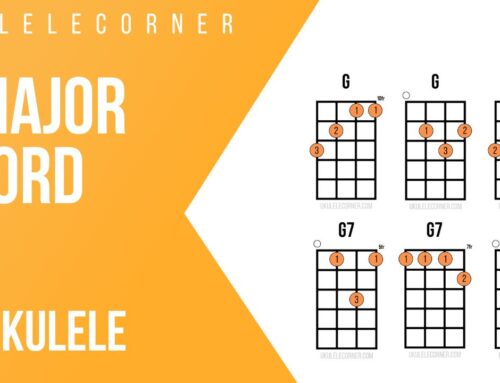Fingerstyle Ukulele
Learning fingerstyle ukulele can be both challenging and fruitful. Most students of ukulele enjoy strumming chords and learning accompaniment to songs. This is one of the great strengths of the instrument. It is easy to begin by learning a few chords and strumming patterns. Then you can play basic accompaniment to various styles of music from folk to Hawaiian to swing to pop music. Taking the next step and learning fingerstyle playing can be more challenging. It requires focused practice and guidance along the way. But, the rewards are tremendous. It allows you to bring out melodies, take solos, to play chord/melody pieces, and you can produce a huge array of tonal colors and textures.
Evolution of the Ukulele
Before you get started with fingerstyle ukulele, we should cover some of the background and evolution of ukulele over the years. Fingerstyle wasn’t born in one day.
The instrument really evolved in the last 20 years with wonderful compositions and arrangements by virtuoso artists including John King, Benny Chong, Jake Shimabukuro, James Hill, Herb Ohta, Jr., and many others. Byron Yasui composed a stunning concerto for the ukulele that was premiered by the Hawai’i Symphony Orchestra. He along with other gifted composers has extended the scope of what is possible with just four strings.
History of the Ukulele
From Machete to ‘Ukulele
But looking back at the history of the instrument, the ukulele has always been known for its lively sound and versatility. The Portuguese immigrants who settled in Hawai’i to work the sugar plantations in 1879 were all known for the gifted playing ability. These included Augusto Dias, Manuel Nunes, and Joao Fernandes who brought performance flair, which led the four-string instrument from Portugal called the machete to evolve into the Hawaiian ‘Ukulele (or “dancing flea”). This name may have been a reference to the small size of the instrument. But more likely is that the talents of the Portuguese musicians who were well received and called on to entertain often provided inspiration for the ukulele’s name.
Leaving Hawai’i
The ukulele quickly became a very important part of Hawaiian music. It filled in a perfect register both when strummed and picked to compliment the acoustic guitar, acoustic bass, and later the steel guitar. The ukulele traveled out of the islands to the World’s Fair in 1893 in Chicago with a Hawaiian ensemble led by the musical prodigy Mekia Kealaka’i. Then it made a lasting impression on American audiences in the 1915 Pan-Pacific Exposition in San Francisco. Due to a huge demand for ukuleles manufacturers like Martin, Gibson, and Harmony started instrument production. By the mid-1920s these and other manufacturers produced over four million instruments. The uplifting spirit of the ukulele and feel-good sounds of Hawaiian music perfectly matched the times in America.
Ernest Ka’ai
It wasn’t long before styles developed and many playing methods and song books were published, including great books by Hawaiian musicians Ernest Ka’ai and my relative Kalani Peterson. Many credit Ernest Ka’ai with being the first to play complete melodies with chords on the instrument. He was considered the authority on the instrument. He published his first book on ukulele playing in 1906 and he was an active teacher well into the 1940s.
Jeff Peterson performing his arrangement of “Akahi” by Ernest Ka’ai

Kalani Peterson
One of my relatives gained recognition for his expertise at both fingerstyle ukulele and steel guitar. Kalani Peterson performed for President Taft in 1910, President Harding in 1910, and President Cooldge in 1929. Like many Hawaiian musicians at this time, both Ka’ai and Peterson moved to the US mainland to make a living with their music. Ka’ai settled in Miami and Peterson settled in New York City, where he acquired the title of “the king of the steel guitarists” (Honolulu Star-Bulletin, Jan. 21st, 1929).
An Era of Great Solo Ukulele Players
Great ukulele soloists emerged across the US and abroad in the 1920s and 30s. These included Roy Smeck, Johnny Marvin, Wendell Hall, and Cliff Edwards (UK). All were known for their showmanship and dazzling technique, mixed with uplifting songs and vocals. The popularity of the ukulele faded during World War II but became popular again in the 1950s when marketed to children by many manufacturers. A few great Hawaiian artists including “King” Bennie Nawahi continued recording during this time. However, it wasn’t until the 1960s that interest in the instrument in Hawai’i grew with great playing by Eddie Kamae, Ohta San, and Kahauanu Lake.
Roy Smeck playing “Tiger Rag”
King Bennie Nawahi playing “Mauna Kea”
Herb Ohta-san playing “Hawai’i”
Jazz and the Renaissance of Hawaiian Music
Lyle Ritz also spread the ukulele playing bug again in the late 1950s. He was the first to record a jazz ukulele album for the Verve label. He developed a brilliant style of solo playing interpreting lush jazz harmonies and up-tempo Bebop tunes. The Hawaiian Music Renaissance of the 1970s brought a great revival of interest in cultural practice, music, hula, and language. Great strides were made with ukulele playing in a Hawaiian style by Peter Moon, both with the group the Sunday Manoa and the Peter Moon Band during this time. This inspired a younger generation of players to explore what was possible on the instrument.
Jeff Peterson plays his arrangement of Peter Moon’s “He Hawai’i Au”
Fingerstyle Ukulele Today
Since this time, many great fingerstyle players have expanded the repertoire. John King has offered wonderful Bach interpretations. Jake Shimabukuro introduced covers by the Beatles and Queen. Benny Chong reinterpreted classic Jazz and Brazilian standards. While James Hill brought Bluegrass to the ukulele. And Herb Ohta, Jr. and Ledward Kaapana created amazing and beautiful Hawaiian arrangements. It is a great time to be learning the instrument. My goal as a teacher is to find ways to make the challenges of learning fingerstyle ukulele be a fun adventure and an exciting journey, full of the same joy expressed by the first Portuguese settlers and the early Hawaiian musicians they inspired.
Benny Chong, Jeff Peterson, and Nathan Aweau play Benny Chong’s “One Note Samba Hula”
***
If you would like to learn to play fingerstyle ukulele, please join Ukulele Corner Academy, where we have a complete, structured method that will walk you through how to play fingerstyle ukulele from beginner to advanced. To join or learn more, please visit here.




Do you play a tenor ukulele and is it tuned to low G as that seems to be preferred by those who use the finger style method of playing the ukulele?
I play tenor ukuleles tuned to both high and low G tunings. Either tuning works well for fingerstyle playing. I prefer high G for strumming.
Try tuning any tenor with a low G, up one tone on G C A, one and one half tone up on E to surprise yourself.
Those pieces especially by Bach Mozart or Carulli can be quite astonishing if you do it for the first time.